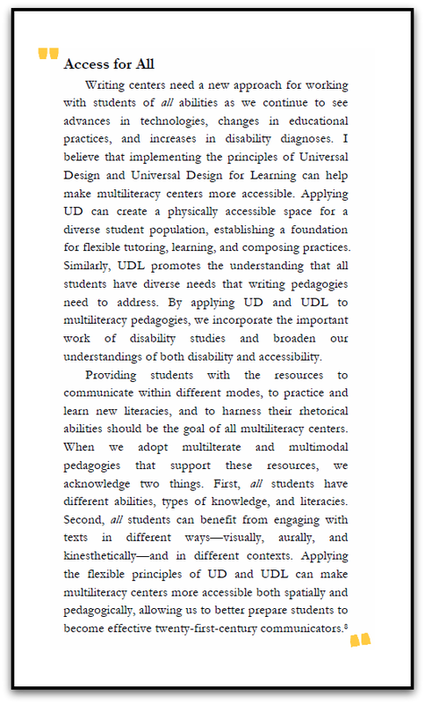"Style used to be an interaction between the human soul and tools that were limiting. In the digital era, it will have to come from the soul alone." |
We suggest the inclusion of Hitt’s piece here as a reminder that our student clients come to us with ever more diverse needs and abilities. If the multiliteracy center is to be a useful bridge for all students, then practitioners must be aware of the challenges their clients navigate, the technologies available to aid in that navigation, and the value of including such aids to navigation from the very beginning. Technology suggests great possibilities for the future of writing centers when combined with sound pedagogy and thoughtful professional development. However, if, in using new technology, we fail to remember or include those on campus who are differently abled, then we also fail to realize completely the promise Lanier suggests. Hitt’s piece suggests a theoretical approach both to the pedagogy of multiliteracy center practice and to their very construction as well. If place matters to the writer, then the writing center must be, as near as possible, the sort of place wherein all who wish to write can feel free to do so with whatever tool or tools the technological torrent has coughed up for that day, or that decade. Hitt provides us compelling guidance on how to make our writing centers be just that.
...
|
What about beyond the next 10 years? How far will technological innovation take us? While accurate predictions are harder to make as our gaze grows more distant, it is possible to look at current technology, and imagine implications for a much better version in the distant future...
CLICK HERE for MORE! |
What is Universal Design for Learning?
|

